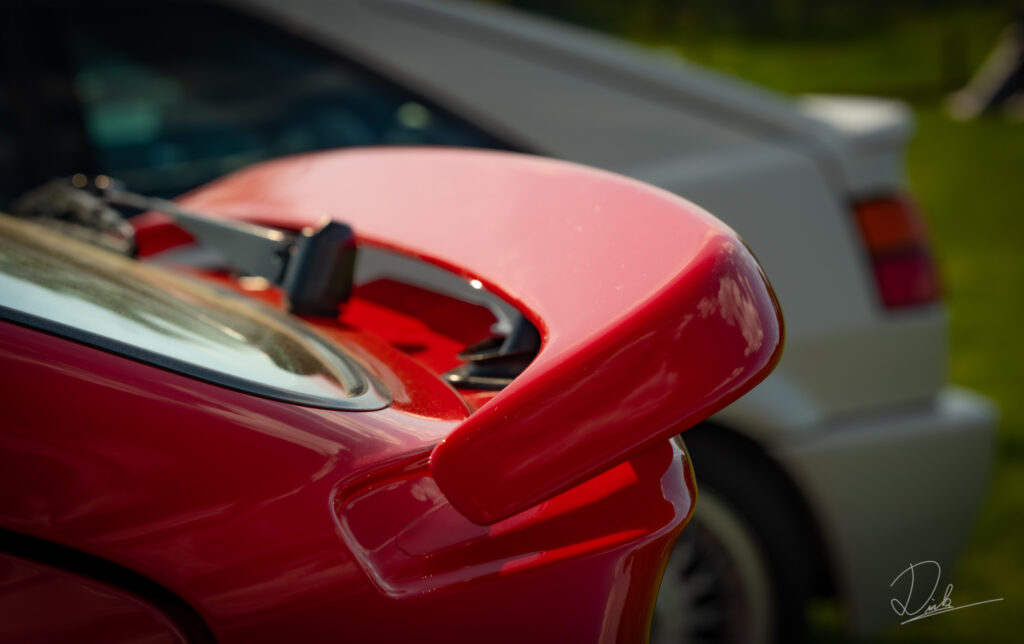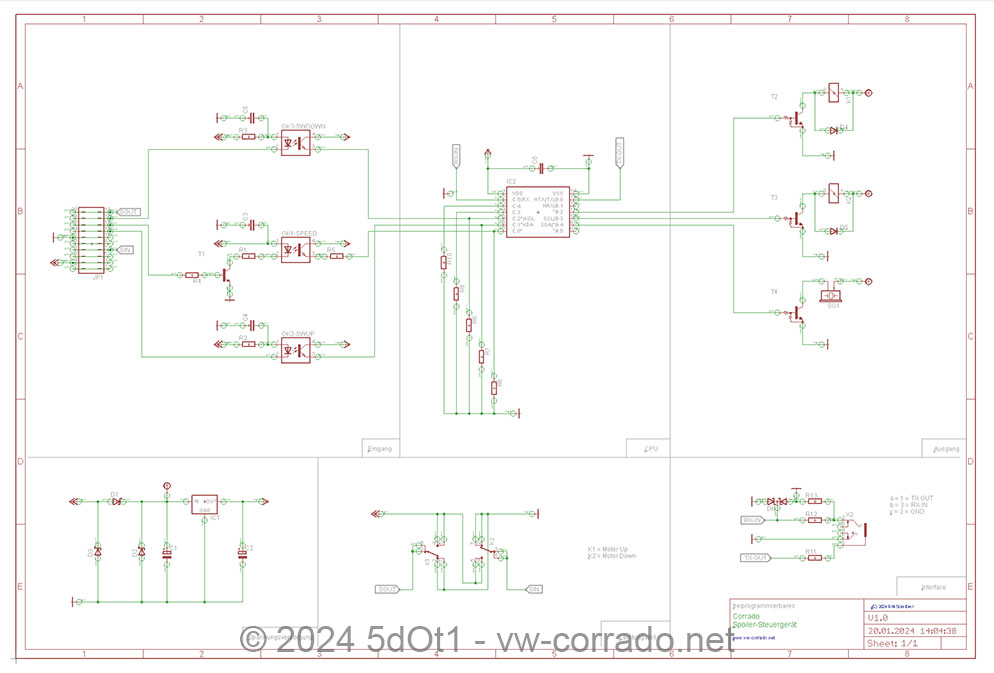For quite a long time I have had the desire to develop a control unit for which the extension and retraction speed is adjustable. In forums, an old manual for the old control unit, which was installed in the Corrados until the end of 1990, was repeatedly mentioned. This manual showed how to modify the control unit so that the spoiler extends earlier but also retracts earlier.

So, for example, instead of extending at 120 km/h and retracting at 20 km/h, it could extend at 90 km/h and retract at 30 km/h. All that was needed was to replace a resistor.
With the newer control unit, which was used in significantly more Corrados (from 02/01/1991), this was not so easy.
Therefore, many people switched to the control units from the US/Japan/Swiss models. Here, the spoiler extends at 45 MPH (72 km/h) but also retracts at 25 mph (40 km/h).
For my part, I would like a control unit that extends further at around 120 km/h and retracts again at around 55 km/h. I find it nice on cross-country drives with town crossings when the spoiler is already resting discreetly on the tailgate at the entrance to the town.
But even for Corrado enthusiasts who would be satisfied with a US control unit, it is not necessarily easy to get hold of one anymore.
But either way, everyone has their own preferences. That’s why I set out to develop this control unit.
Together with my buddy Andreas, we developed the window regulator control unit at that time. He did the software and I did the hardware. It was a great time, but somehow we drifted apart. He wasn’t really into the VSR at the time, and he wasn’t too excited about the spoiler control unit either.

So I had to take a closer look at microcontroller programming. I went through the different types and then got stuck with the PIC again when I discovered a development environment that suited me and my rudimentary knowledge of BASIC, VB, VBA, PHP and some C.
irst, I built the control unit roughly on a breadboard and then programmed the software for it.
Afterwards I created a PCB layout. All this was not a big problem so far, but since I wanted to make the control unit completely Plug’n’Play, I needed a modified cover from the original control unit. So the plan was that only the old control unit had to be unplugged, the housing had to be opened, the old board and plug could be pulled out and the new control unit could simply be clipped into the original housing. Then the control unit could be plugged back into the original holder and the original plug could be plugged in. Done.
Since I had little to no experience with 3D object development so far, I had to learn about that as well. First, I drew the connector two-dimensionally in three views in a graphics program. Then I looked for ways to create a 3D object from it. I actually only found one program that can do this. But here I unfortunately encountered such big problems that I saw it as a dead end. As a second attempt, I then directly drew the cover with the connector in a 3D CAD program.
That worked out better than I thought. I gave the STL file to a friend to print, because I don’t own a printer myself. It didn’t make sense for me, because I couldn’t create 3D files anyway and I didn’t find it very productive to just print files from the internet that others had created.
hen I quickly went down to the basement to mill two PCBs and soldered them together. he result is now, after a long and difficult journey, exactly as I had imagined it. The control unit also passed a functional test in the car. My spoiler now extends at 120 km/h and retracts at 55 km/h 🙂
And if I ever don’t feel like it anymore, I’ll just set a different speed.
So, what can this thing do?
You can freely adjust the extension and retraction speed. To do this, simply start the vehicle with the spoiler extension button pressed. Release the button again and the control unit will beep a few times to indicate that it is in programming mode. Now simply drive until the desired extension speed is reached and press the extension button again. The control unit will then beep again to confirm. Next, hold the retraction speed and press the button to retract the spoiler.
The control unit will also confirm this with a confirmation tone and check the plausibility of the set speeds, i.e. whether the extension speed is higher than the retraction speed.
If this is the case, the values are stored permanently and the control unit switches to normal mode. The setup menu is called up every time the ignition is switched on with the extension switch pressed. So it is always possible to set new speeds.
Manual extension and retraction is now also a bit more convenient.
A short press of the button is all it takes to extend or retract the spoiler completely. If you only want to extend or retract the spoiler a little, simply press the button again and the spoiler will stop moving.
If you are interested in a control unit, please send me a message via the contact form (Kontakt-Button on the left).
With that in mind, Spoilers Up!
Dirk aka 5dOt1

